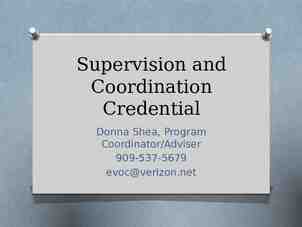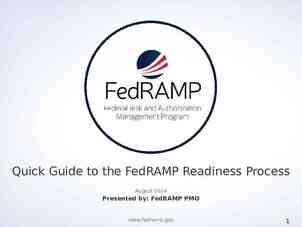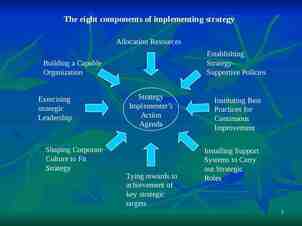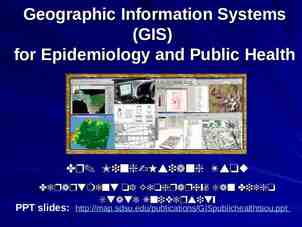Life as a New Professional in the Physical Therapy Field: An
50 Slides4.11 MB
Life as a New Professional in the Physical Therapy Field: An Open Forum to Discuss Professional and Personal Topics for Emerging Practitioners Kevin Sanborn, PT, DPT, OCS Brad Gant, PTA, MHA INAPTA Fall Conference 2016
Learning Objectives 1. Know the process of sitting for physical therapy board examination and format of the test. 2. Understand the basic goal of physical therapy residencies and fellowships. 3. Know the eight specialty areas recognized by The American Board of Physical Therapy Specialties 4. Understand the opportunities for PTA’s to achieve Advanced Proficiency Pathways. 5. Know the steps required to sit for a clinical specialty examination and the basic format of the examination. We will also discuss the new format for maintaining specialty status. 6. Learn several options for repayment of student loans and strategies for reducing overall debt with reference to the APTA website. 7. Learn of the many opportunities to become involved in the local, state, and national APTA.
Kevin’s Background 2008: Indiana University – Exercise Science 2012: IUPUI – Doctor of Physical Therapy 2013: UIndy & Body One PT – Ortho Residency 2014: OCS certification 2015: New Professional position 2016: Manager of Body One - Fishers
Brad’s Background 2005: University of Evansville - PTA, Exercise Science 2005: PTA at St. Mary’s Hospital, Evansville, IN 2009: University of Southern Indiana - Masters of Health Administration 2009: Coordinator of Outpatient Rehab. St. Mary’s Hospital 2014: Practice Administrator, St. Mary’s Medical Group 2014: PTA Caucus Representative, IN
How about you?
Hope for this hour TALK!!! All questions welcomed, at any time We are ok if we get sidetracked
Board Examination Administered by: THE FEDERATION OF STATE BOARDS OF PHYSICAL THERAPY (FSBPT) https://www.fsbpt.org/ New this year JOURNEY MAP Put in your school and state of intended practice
Board Examination 1. Graduate 2. Apply for exam through licensing agency 3. Complete application - 100 2 passport-style photos Official transcript Marriage certificate if change of name Social Security Number 4. Register for Exam – 400
Board Examination cont 5. After your application is approved Authorization to Test 6. Schedule exam through Prometric 85 for PT, 70 for PTA www.prometric.com/fsbpt
Board Basics - PT 250 multiple choice questions (200 scored) Divided into Systems Musculo, Neuro, Cardio, ect. Category Examination Differential Diagnosis Intervention Also questions about: Professionalism, Ethics, Modalities, Safety https://www.fsbpt.org/Portals/0/documents/free-re sources/ContentOutline 2013PTT 201212.pdf
Board Basics - PTA 200 multiple choice questions (150 scored) Divided into Systems Musculo, Neuro, Cardio, ect. Category PT Data Collection Diseases & Conditions that Impact Treatment Intervention Also questions about: Professionalism, Ethics, Modalities, Safety https://www.fsbpt.org/Portals/0/documents/free-re sources/ContentOutline 2013PTA 201212.pdf
Board Basics - PT 5 hours for PT, 4 hours for PTA 15 min break after section 2 Divided into sections of 50 questions Can return to questions in the section Once submitted, forget about it! No penalty for wrong answers
Am I making you nervous? The NPTE was developed to measure knowledge and abilities required of entrylevel physical therapists (PTs) and physical therapist assistants (PTAs). Keyword(s): ENTRY LEVEL!
Board Results Results sent to jurisdictions approx. 5 business days later Results available in 10 business days. Raw scores converted to scale scores 200800 600 to pass Variation between tests 1-2 question difference
My Advice Take practice tests Take them early and often PEAT Practice Exam and Assessment Tool PT 2 timed, 250 exams PTA 2 timed, 200 exams Same format as actual test Instant feedback 99
YOU PASSED!!! Now what? Lots of options for career progression
Residencies and Fellowships in PT American Board of Physical Therapy Residency and Fellowship Education http://www.abptrfe.org/home.aspx
Residencies and Fellowships in PT 206 residencies and 43 fellowships
Residency Overview Directed at a specialty area A clinical residency program is designed to substantially advance a physical therapist's expertise in examination, evaluation, diagnosis, prognosis, intervention, and management of patients in a defined area of clinical practice (specialty).
Residency Overview Learn a lot and become real smart Focus on evidence based practice Clinical and didactic education You don’t know what you don’t know All residents must have a minimum of 150 hours of 1:1 mentoring and 75 hours of didactic instruction over the course of the program
Residency Overview Must have a PT license Some programs will allow to start with a temporary license Costs Varies greatly per program Pay tuition full salary with benefits APTA reduced rates Loan forbearance or deferment May require level of experience
To apply Contact program director http://www.abptrfe.org/apta/abptrfe/Directo ry.aspx?navID 10737432672
Residency Benefits Confidence! Marketability Eligible to sit for specialty certification Speed up career path Video
Specialty Certification American Board of Physical Therapy Specialties (ABPTS) http://www.abpts.org/home.aspx 1. 2. 3. 4. 5. 6. 7. 8. Ortho Neuro Sports Cardio and Pulmonary Women’s Health Electrophysiology Geriatrics Pediatrics
Fellowships A fellowship program is designed to provide greater depth within a subspecialty area (beyond specialty) than that which is covered in a residency program. Applicants of a clinical fellowship program must possess one or more of the following qualifications: 1. specialist certification 2. completion of a residency in a specialty area, or
Specialty Certification As of June 2016, 20,144 individuals have been board certified as clinical specialists in physical therapy More than 204,000 PT in the US About 10% have a clinical specialist designation Be recognized as an expert Career jumpstart
Specialty Certification Offered one time per year, usually in FebruaryMarch Application due in July of previous year Eligibility to test: PT license a) 2000 clinical hours in area of specialization or b) Completion of a residency Some specialties may require additional prerequisites Cost 1315 for APTA members
Test Format 200 multiple choice questions Two, three-hour blocks of 100 questions each Keep in mind: Clinical based Evidence based
Test Results 3 months later All test questions are evaluated by a committee Ensure questions are valid and fair Converted to a scaled score 500 results in a passing score
Maintenance of Specialty Certification Recent change to this process Certification used to be valid for 10 years Recertify by: 1. Examination 2. Portfolio 3. Completion of a residency ABPTS has found that most clinicians renew by portfolio May not be reflective of continued education and knowledge of current, EBP
Maintenance of Specialty Certification New process In years 3, 6, and 9 Proof of 200 hours of direct patient care in area of clinical specialty Web-based system to record professional development activities. Need a certain amount of hours in: 1. 2. 3. 4. 5. 6. 7. 8. Professional services continuing education coursework publications presentations clinical supervision and consultation research clinical instruction Teaching Reflective Portfolio Year 10 Examination consisting of 100 questions
Specialty Certification Make a plan Find a study partner Start early Remember that questions are based on current literature and clinically based
APP’s for the PTA Advanced Proficiency Pathways Geriatrics, Acute Care, Pediatrics, Wound Care, Cardiopulmonary, Oncology, Orthopedics
APP Requirements 2000 work hours, 500 hours in the past year when applying APTA member Completion of 60 hours of CE in the selected content area Mentorship with a PT who possess clinical expertise
APP 2 enrollment cycles August 1 (enrollment opens May 1) February 1 (enrollment opens November 1) enrollment fee 135 portfolio review 135 Recognized at NEXT each June, in APTA publications, website, and receive lapel pin. Good for 10 years, then you renew the APP (same requirements of initial recognition)
Potential future APP areas Sports Women’s Health Education Neurology [email protected]
Getting a Job First few years after school is crucial Find a setting that is aligned with your personal goals, beliefs, treatment mantra, etc Shadow Find mentors
Student Loans YIKES! Take a breath, there are options! Do the math, make a plan Know how much interest your loan will be accruing Example 50,000 student loan @ 6.5% interest 9 per day or 267 per month
Student Loan Options Standard plan 10 year repayment Graduated repayment plan Pay less at first and then more every 2 years Extended repayment plans Up to 25 years
Student Loan Options Many options for current or former military members Income based-repayment plans Income-based repayment Pay as you earn Income-Contingent repayment All these plans are capped between 10-20% of your discretionary income 20-25 years of repayment then forgiveness FEDERAL INCOME TAX Public Service Loan Forgiveness Government or Not-for-profit 120 payments No federal income tax
Get the snowball rolling! Can be overwhelming Make a plan, work the plan Watch it gain momentum Do your research http://www.apta.org/DebtManagement/ https://studentaid.ed.gov/sa/repay-loans/understand/ plans
Student Loan Options Refinance Stafford loans 6.5% Direct Loans 7.65% Many companies available Earnest SoFi
Get Involved Many opportunities to be active in INAPTA District meetings Committees APTA dues are discounted for first 4 years after graduation 50% (if renew within 6 months after graduation) 40%, 30%, 20% Employer may pay for APTA membership Continuing education 22 hours every 2 years
Any more questions? Please contact us with any and all questions [email protected] [email protected]
References Black LL, Jensen GM, Mostrom E, Perkins J, et al. The First Year of Practice: An Investigation of the Professional Learning and Development of Promising Novice Physical Therapists. Phys Ther. 2010, 90: 1758-1773. Tryssenaar J, Perkins J. From student to therapist: exploring the first year of practice. Am J Occup Ther. 2001; 55: 19-27. Jones S, Bellah C, Godges JJ. A Comparison of Professional Development and Leadership Activities Between Graduates and Non-graduates of Physical Therapy Clinical Residency Programs. Journal of Physical Therapy Education. 2008, 22(3): 85-88. Johnson L. Protect the Value of your Degree and Your Future: Understand and Prepare Your Debt for Graduation and Beyond. http://www.apta.org/DebtManagement/?navID 10737423202. Accessed on June 17, 2015. http://www.abptrfe.org/home.aspx http://www.abpts.org/home.aspx https://www.fsbpt.org/ http://www.in.gov/pla/pt.htm www.prometric.com/fsbpt























































